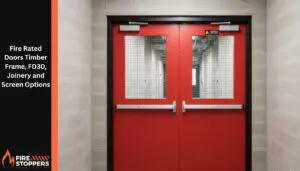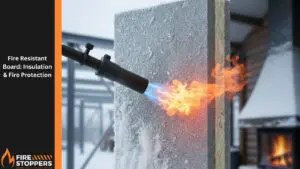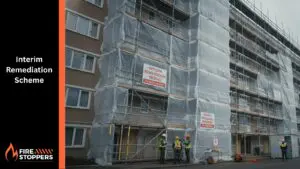Understanding Cavity Barriers in Fire Protection
Cavity barriers serve as essential components in passive fire protection systems throughout Ireland’s construction industry. These fire-resistant barriers prevent fire and smoke from travelling through concealed spaces within buildings, effectively blocking the passage of fire from one area to another. When properly installed, cavity barriers compartmentalise hidden spaces in walls, floors, and ceilings, creating critical fire resistance that protects lives and property.
In modern construction, cavity fire barriers must meet stringent building regulations that ensure overall fire safety. These barriers work by sealing gaps and voids that would otherwise allow fire to bypass standard fire protection measures. By preventing fire spread through concealed spaces, cavity barriers play a crucial role in maintaining the integrity of a building’s structure during emergencies.
Passive Fire Protection and Cavity Barrier Installation
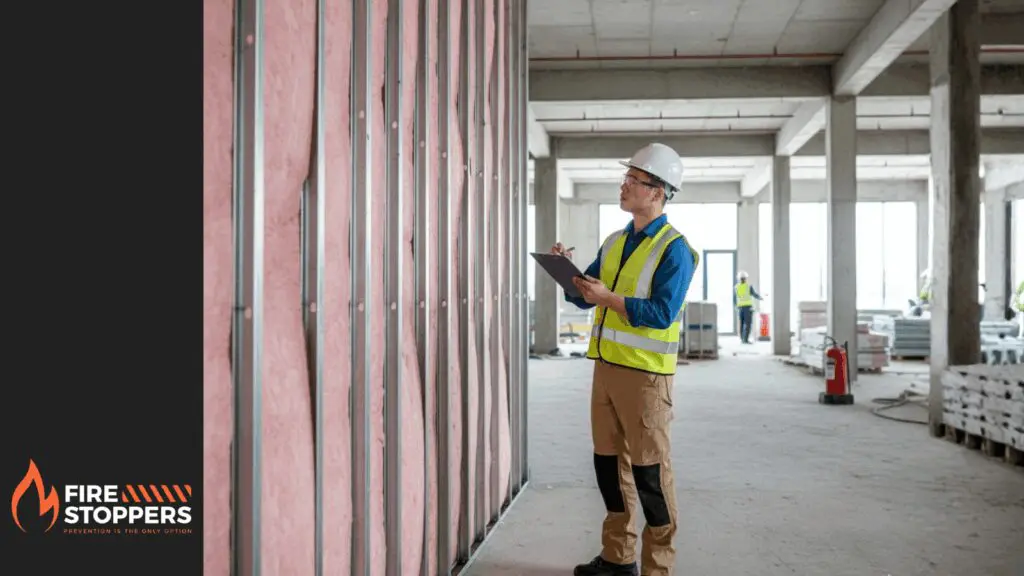
Passive fire protection represents a fundamental approach to fire safety in Ireland, with cavity barriers forming a critical aspect of these systems. Unlike active systems that require power or activation, passive fire protection works continuously through fire-resistant materials and strategic compartmentation. Cavity barriers should be installed at specific intervals within cavity walls and other concealed spaces to prevent the spread of fire and hot gases.
The installation process requires careful attention to detail. Professional fire protection services ensure barriers fit precisely within the cavity, creating an effective seal against fire and smoke. These barriers must integrate seamlessly with other passive fire protection elements, including fire stops, intumescent materials, and fire-rated walls. Proper installation in floors, ceilings, and walls creates comprehensive protection throughout the building’s structure.
Fire Safety Compliance and Cavity Fire Barriers in Ireland
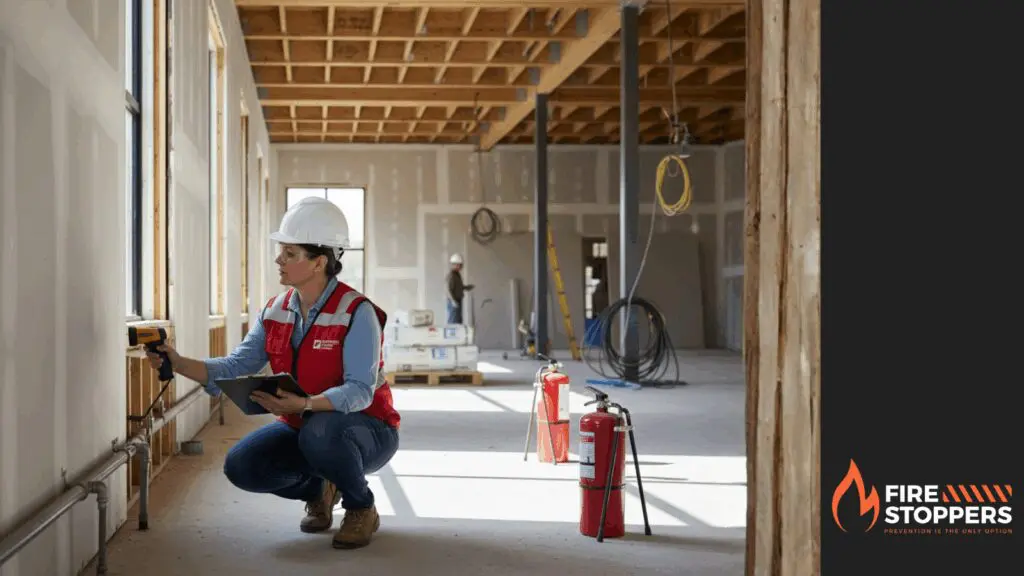
Meeting compliance requirements for cavity barriers demands a thorough understanding of Irish building regulations. Fire risk assessment procedures identify where cavity barriers are designed to provide maximum protection. Building owners must ensure their properties meet specific fire safety standards, with cavity fire barriers installed at designated locations to maintain proper compartmentation.
Compliance involves more than just installation. Regular fire risk assessments verify that cavity barriers remain effective over time. Accredited fire professionals conduct thorough inspections to confirm barriers haven’t been compromised by building modifications or deterioration. These assessments ensure the overall fire safety strategy continues to protect occupants and meet regulatory requirements.
Intumescent Materials and Fire Stop Systems
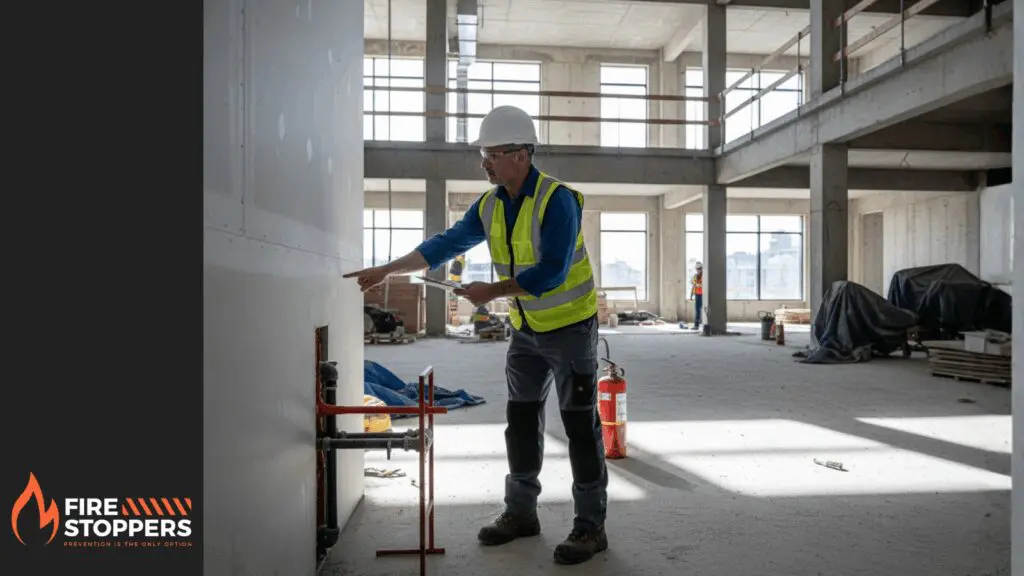
Intumescent materials form a vital component of modern cavity barrier systems. These specialised materials expand when exposed to heat, effectively blocking the passage of fire and smoke through openings and penetrations. In Ireland, fire protection services utilise various intumescent products, including coatings, masonry-based systems, and flexible seals that adapt to different structural requirements.
Fire stop systems work alongside cavity barriers to seal penetrations where services pass through fire-resistant walls and floors. These systems prevent fire damage by maintaining compartmentation even where pipes, cables, and ducts breach fire barriers. The combination of intumescent fire stops and cavity barriers creates comprehensive passive fire protection that addresses both concealed spaces and visible openings.
Cavity Barrier Solutions for Different Construction Types

Different building types require tailored cavity barrier solutions. Timber frame constructions need specialised barriers that accommodate movement while maintaining fire resistance. Steel structures require barriers that withstand high temperatures without compromising structural steel protection. Masonry buildings benefit from barriers designed specifically for cavity wall applications.
Modern cavity barriers incorporate various materials, including mineral fibre, aluminium foil facings, and intumescent components. Each material serves specific needs within the building’s fire safety strategy. For example, some barriers provide acoustic properties alongside fire protection, while others focus primarily on preventing fire and smoke from travelling through ventilated facades.
Fire Barrier Installation in Concealed Spaces

Hidden spaces within buildings present unique challenges for fire protection. Cavity barriers must effectively seal voids in walls, above ceilings, and below floors where fire could spread rapidly undetected. These concealed spaces often contain services and structural elements that complicate barrier installation.
Professional installation ensures barriers fit properly around obstacles while maintaining their fire-resistant properties. Engineers specify exact locations where barriers will provide maximum protection, considering factors like ventilation requirements and structural movement. The goal is to create effective compartmentation without compromising the building’s functional requirements.
Maintaining Passive Fire Protection Systems
Once installed, cavity barriers require ongoing attention to maintain effectiveness. Building owners should schedule regular inspections to verify barriers remain intact and properly positioned. Any modifications to the building’s structure or services could compromise barrier performance, making post-modification inspections essential.
Older buildings present particular challenges, as original fire protection may not meet current standards. Retrofitting cavity barriers improves fire safety while ensuring compliance with modern regulations. Professional fire protection services assess existing conditions and recommend appropriate upgrades that enhance overall fire safety without extensive structural modifications.
The Role of Cavity Barriers in Fire Safety Strategy
Cavity barriers represent one element in comprehensive fire safety planning. They work with other passive and active systems to protect occupants and property. By preventing fire spread through hidden spaces, barriers provide crucial time for evacuation and emergency response. This integrated approach ensures fires remain contained, limiting damage and protecting lives.
Fire protection in Ireland continues evolving as construction techniques and materials advance. Cavity barriers now incorporate innovative materials and designs that improve performance while simplifying installation. These developments ensure buildings meet the highest standards of fire safety while accommodating modern architectural requirements.
Professional Fire Protection Services
Need Fire Safety Services?
Professional fire safety solutions for your peace of mind
Contact FireStoppers Today!
For Fire Emergency: Call 999 or 112
For all other fire safety services, use the contact details above
Engaging qualified fire protection services ensures cavity barrier systems meet all requirements. Professionals understand specific fire safety regulations applicable in Ireland and design solutions addressing each building’s unique needs. From initial fire risk assessment through installation and maintenance, expert guidance ensures optimal protection.
Firestopping solutions must be fully tested and certified for their intended applications. Professional installers understand which products suit different situations and ensure proper installation techniques. This expertise proves invaluable when addressing complex scenarios involving multiple fire protection requirements.
The primary function of cavity barriers remains consistent: preventing fire and smoke from spreading through concealed spaces. However, achieving this goal requires careful planning, quality materials, and expert installation. By working with experienced fire protection services, building owners ensure their properties maintain the highest standards of fire safety, protecting both occupants and investments for years to come.

